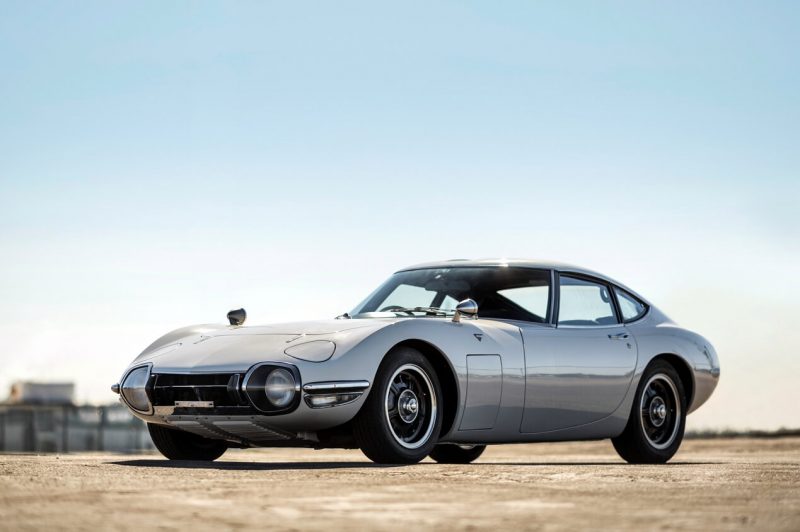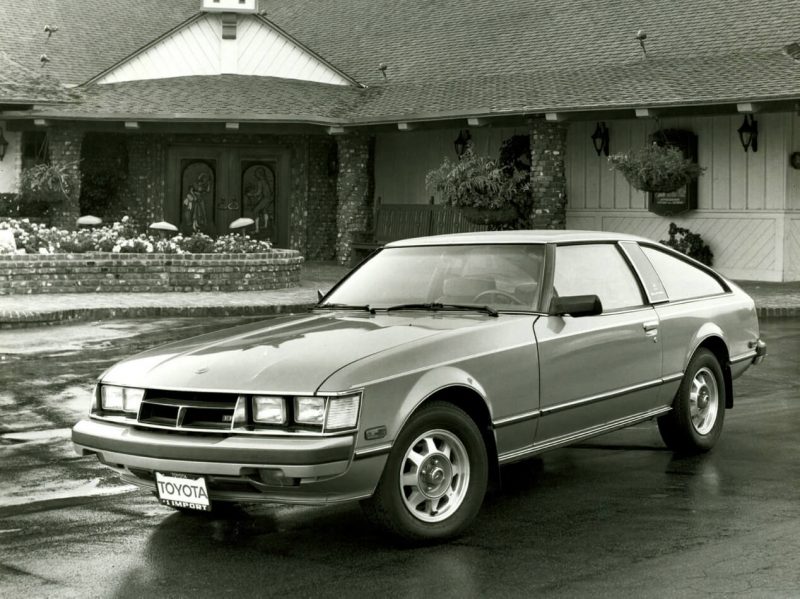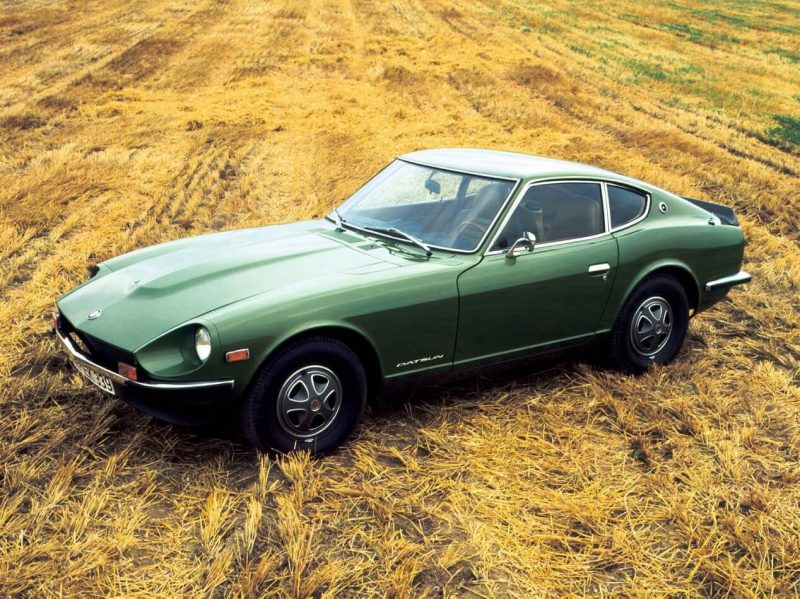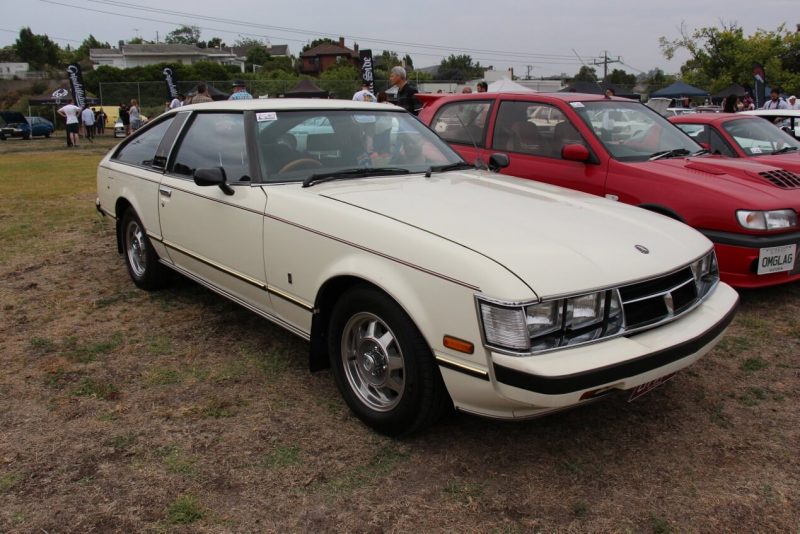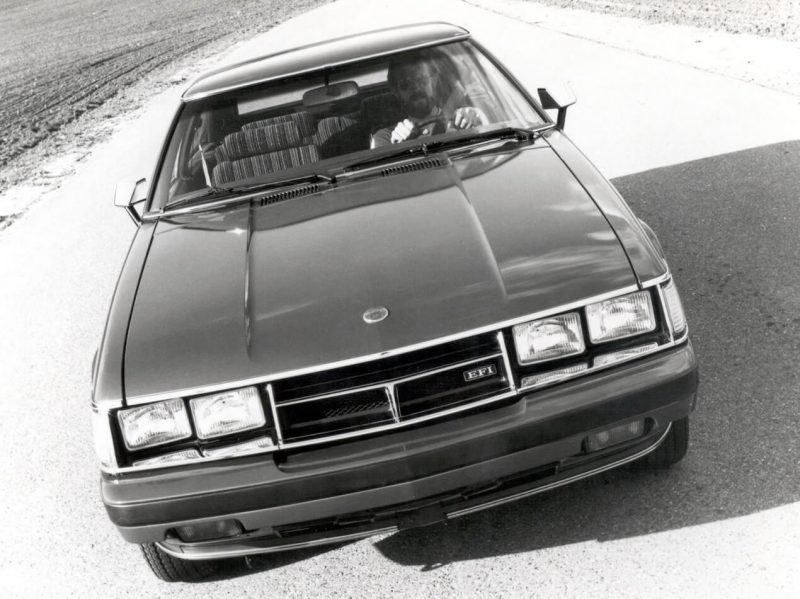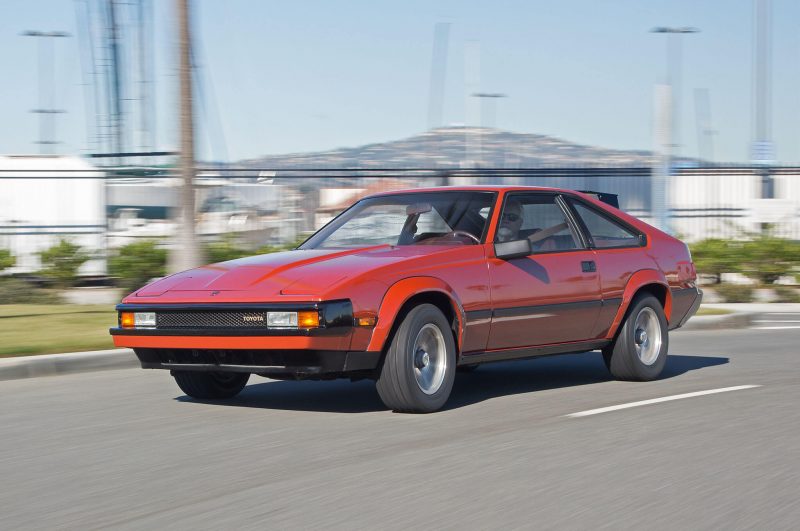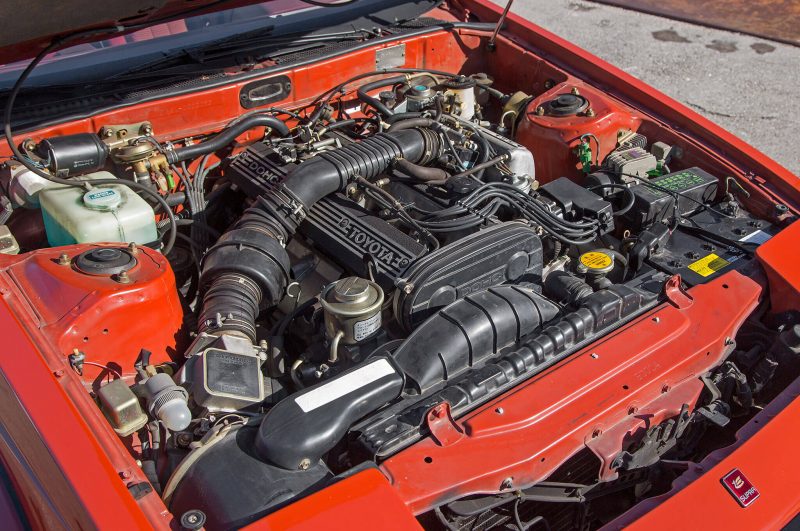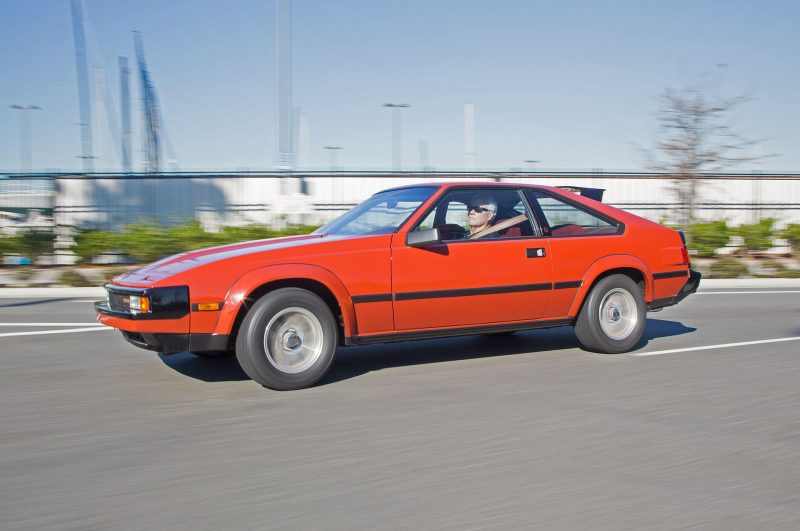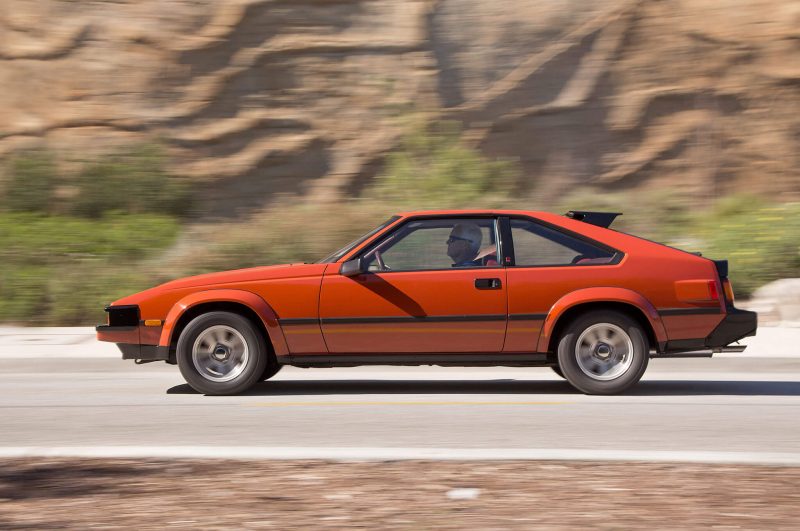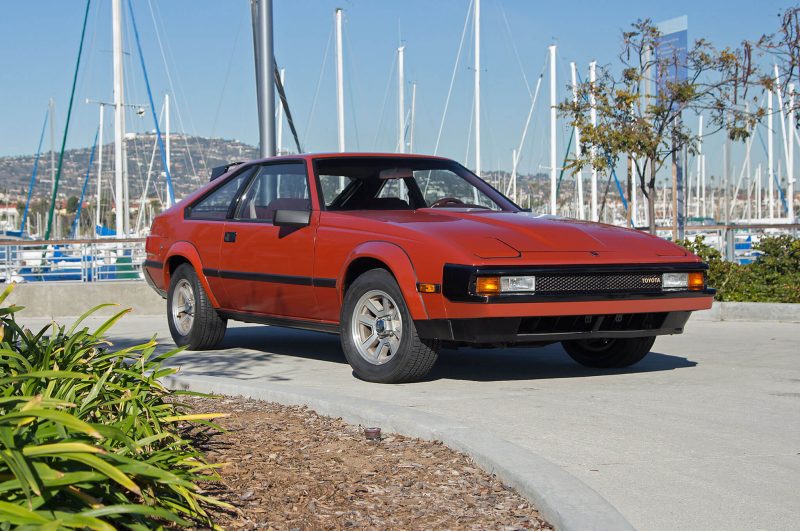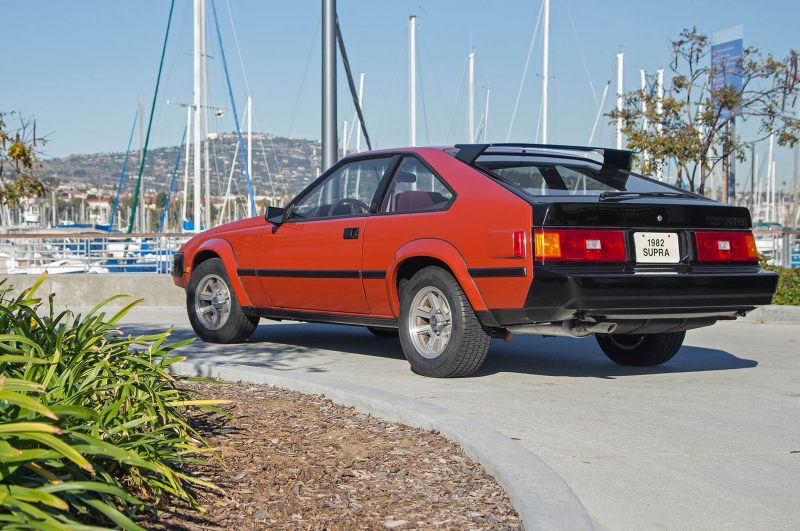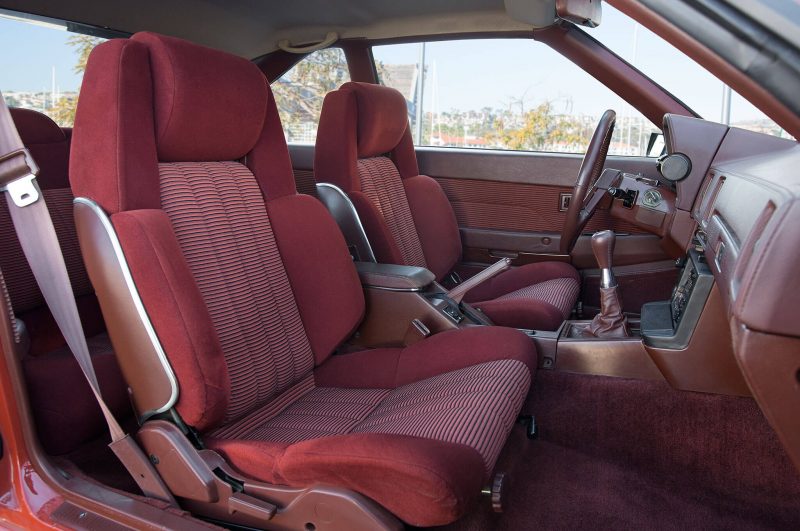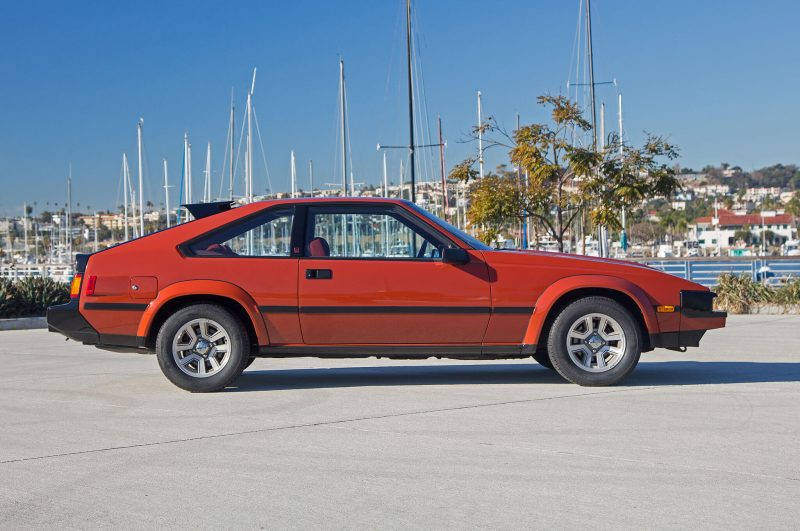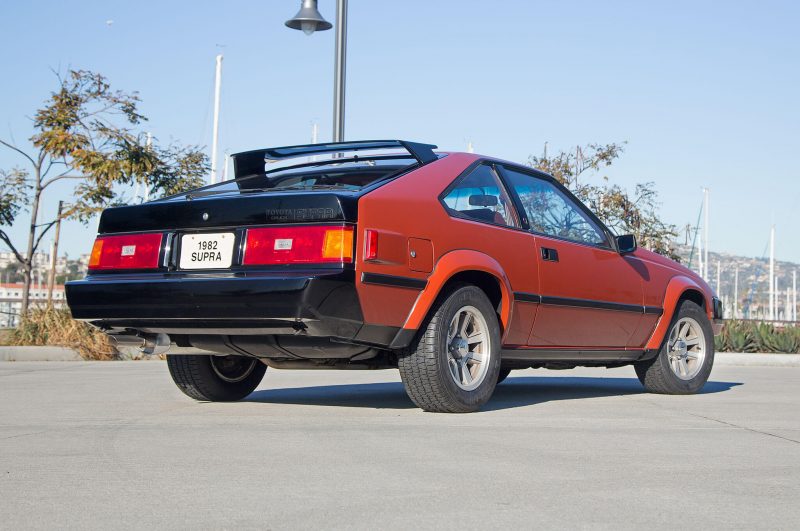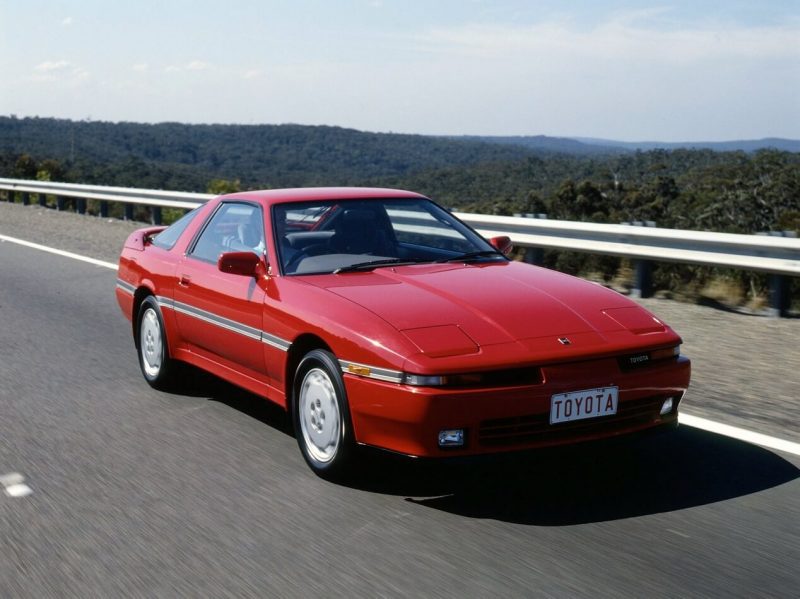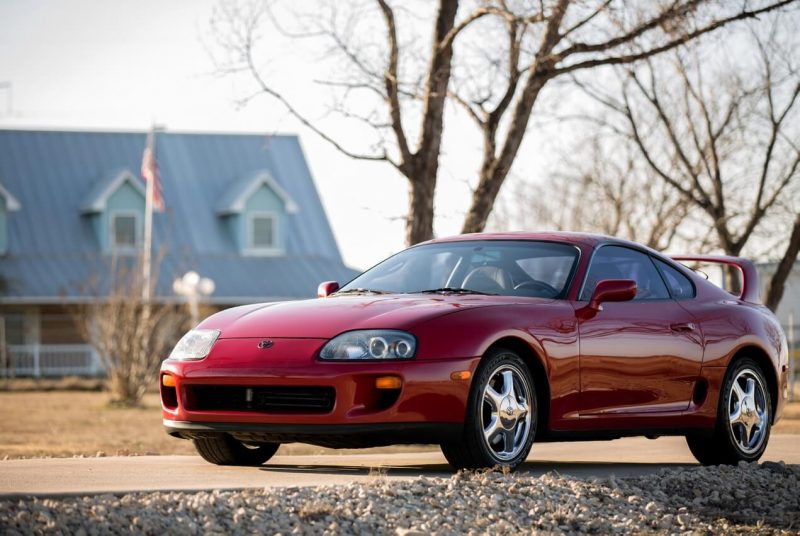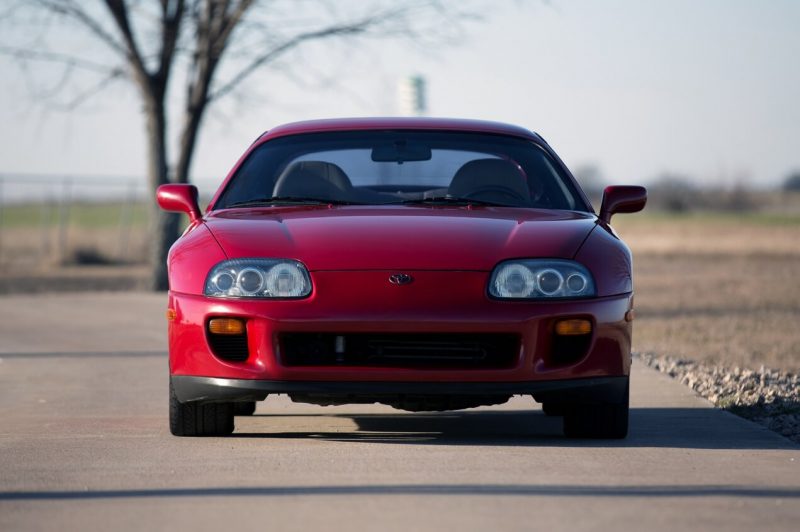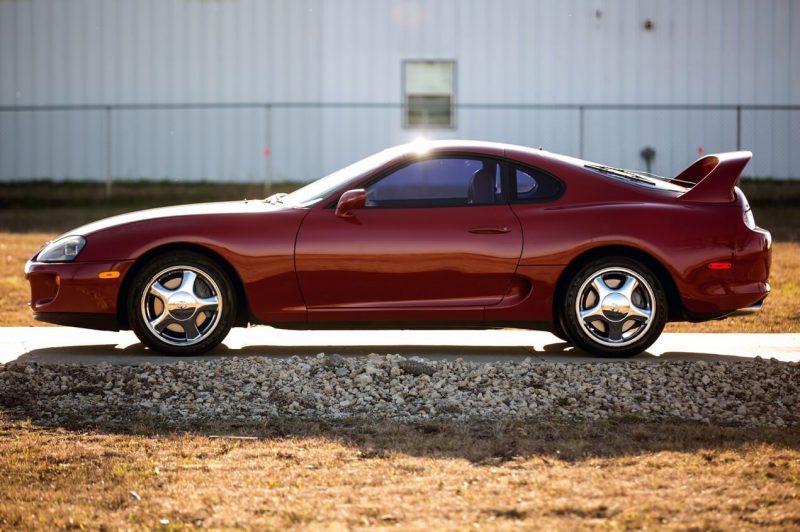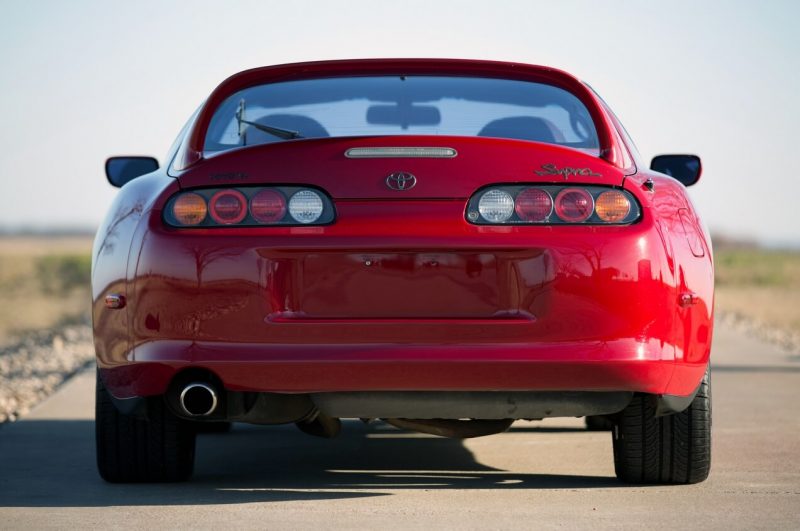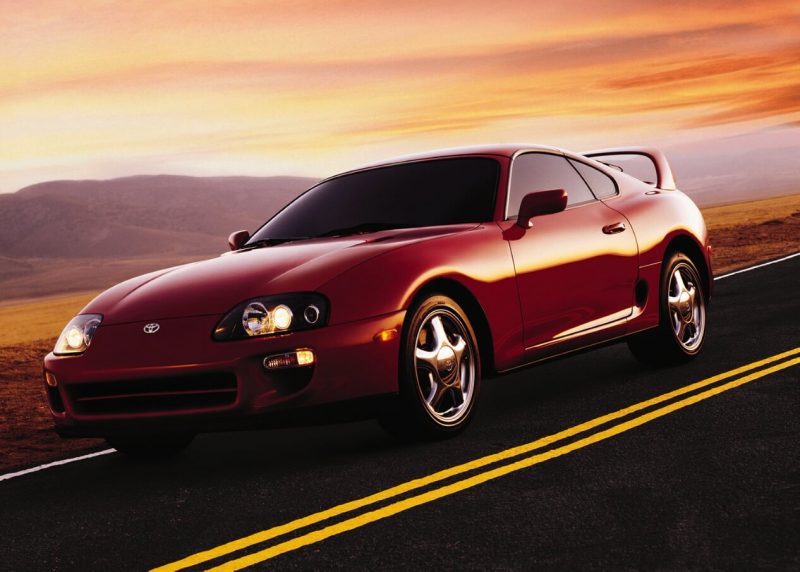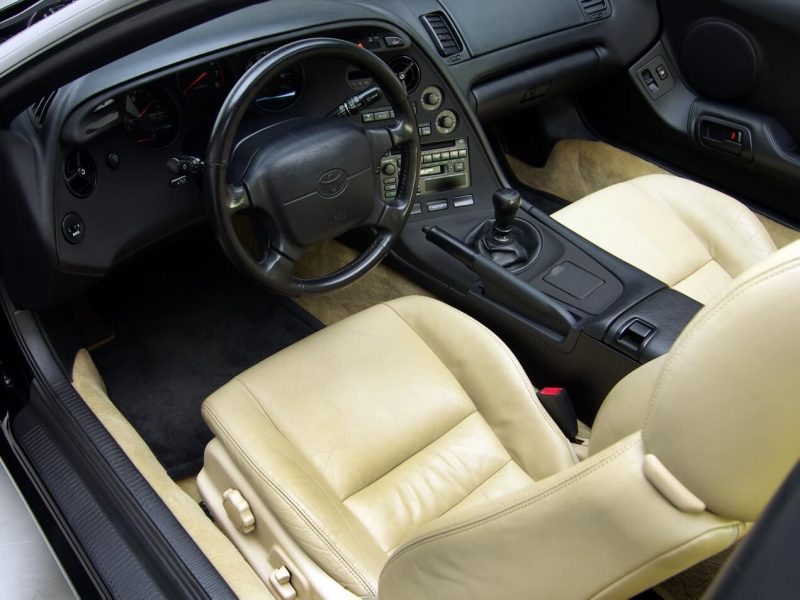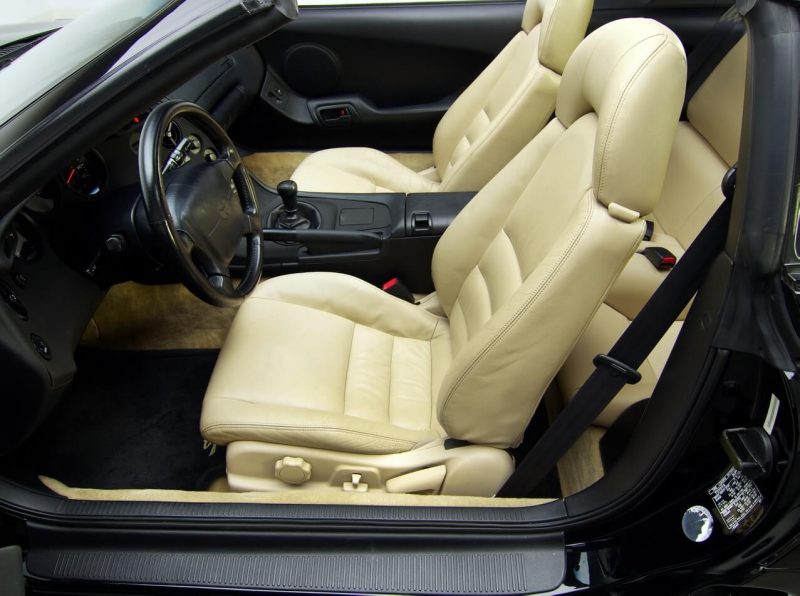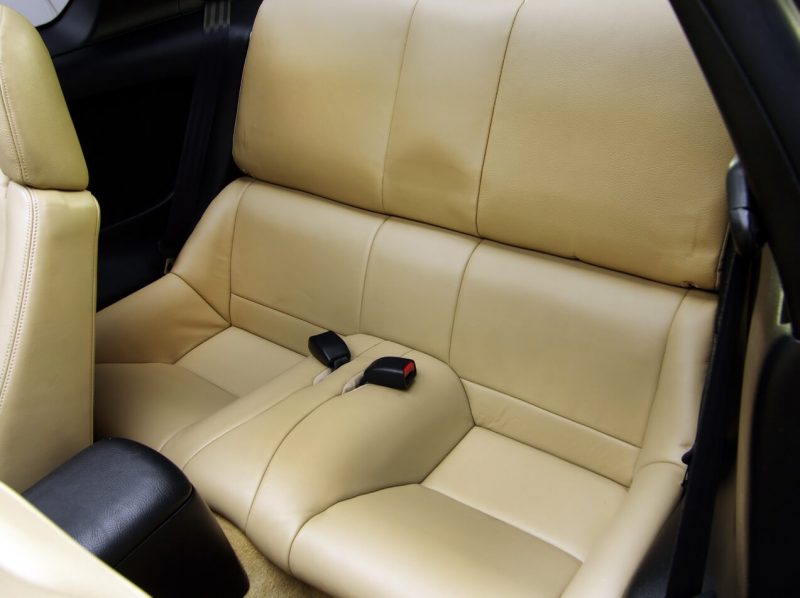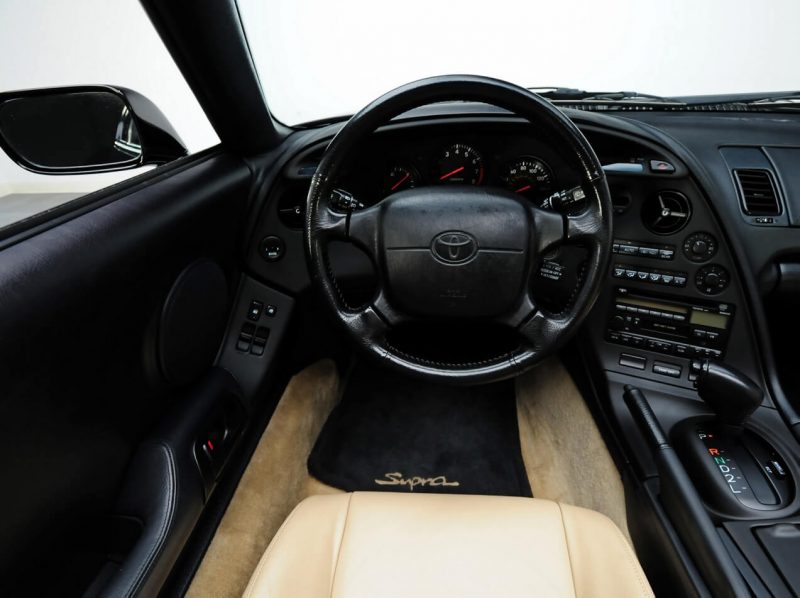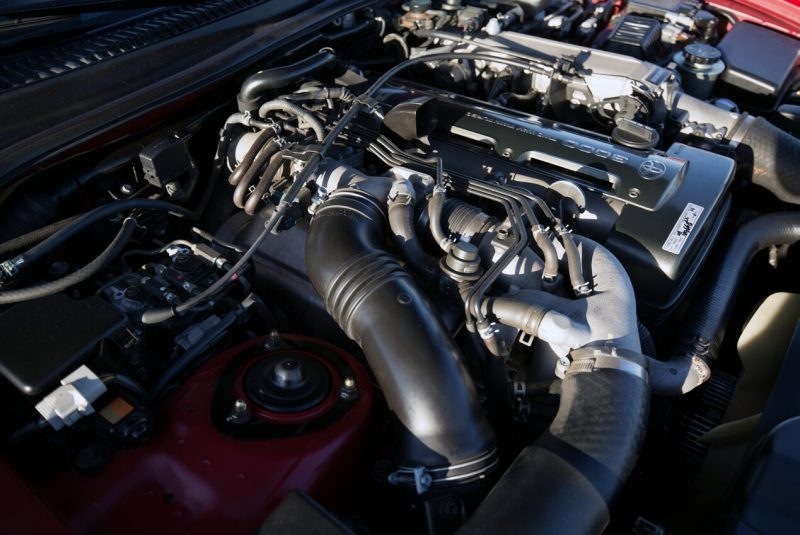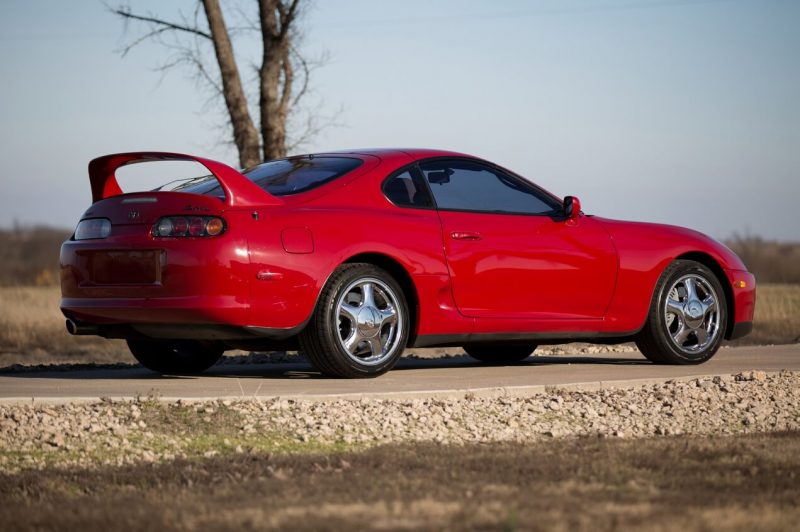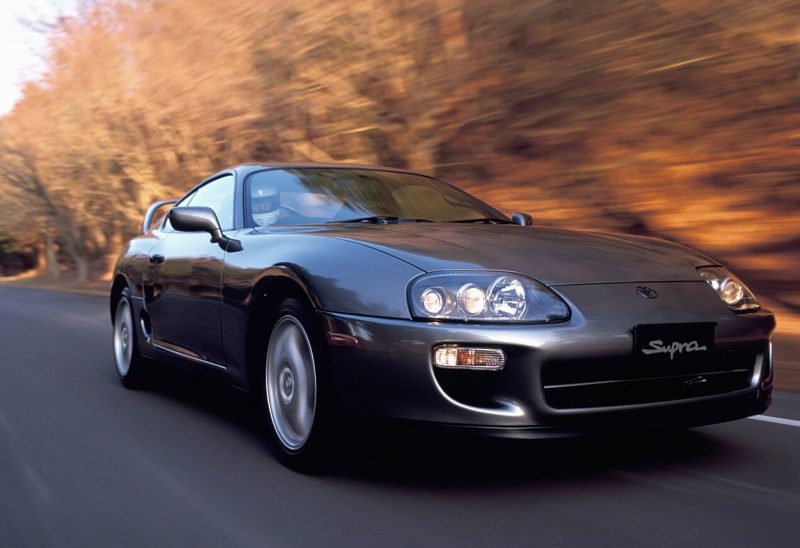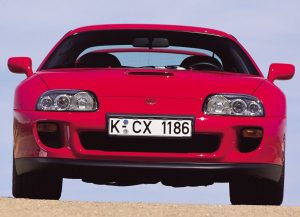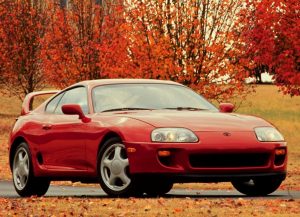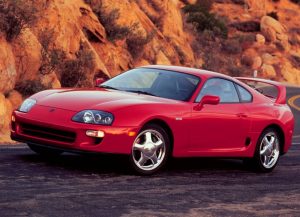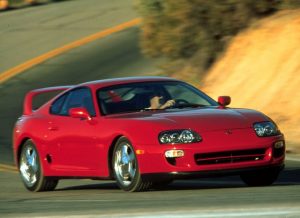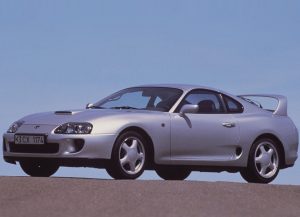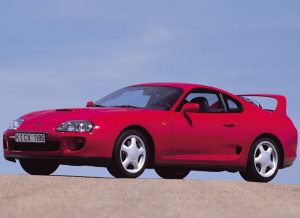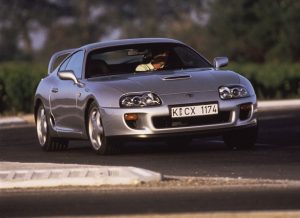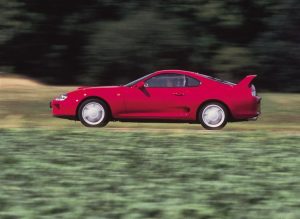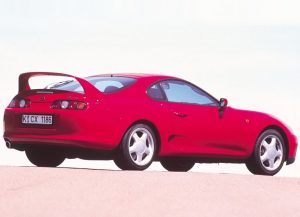Toyota Supra
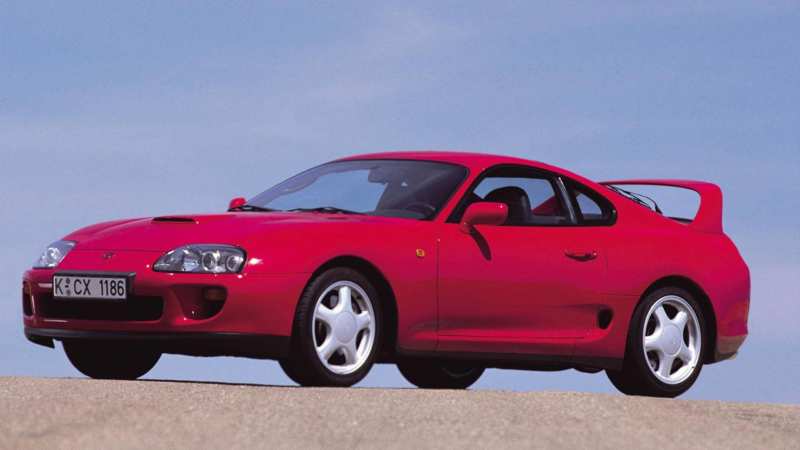
Only the Toyota Supra Mk4 was able to compete with the world-famous Porsche 911. The fact is that the Japanese car had a similar characteristic, but the price was half the price. The whole model range is Toyota.
- Car history
- 1 generation (1978-1981)
- 2nd generation (1982-1986)
- 3rd generation (1986-1992)
- 4th generation (1993-2002)
- Exterior
- Interior
- Specifications
- Powertrain
- Transmission
- Suspension
- Steering system
- Brake system
- Prices and equipment
- The pros and cons
- Summing up
- Toyota Supra photo
- Test drive
- Video overview
Car history
Such a modest car has become an icon for connoisseurs of car sports and just fans of fast cars. The appearance of Supra was adopted from Toyota Celica, but the body became longer and wider. Since 1986, the Supra was separated from Celica and became an independent model.
Because of this, Toyota ceased to use the prefix Celica, and the car was simply called Supra. Since the vehicles are very similar, they are often confused. If the 1st, 2nd and 3rd families of Supra were assembled at the Takhar enterprise, the last variant – at the enterprise of Toyot city. Supra has a connection with Toyota 2000GT, from which the engine has migrated.
The first 3 families were equipped with M-series engines from Toyota Crown and 2000GT. All generations were equipped with in-line 6-cylinder engines. The chassis had its own name under the code “A”. Together with the name, Toyota developed its own logo for the Supra. Auto often became the hero of filming – the most popular “role” in the movie “Fast Track”.
However, the coupe liked and was popular even before the film. He is well known around the world and, of course, in America. Despite the fact that not many people in European countries drive right-hand drive cars, Supra has won fans there as well.
The model was produced in the back of the coupe and targa. Supra in translation means “above”, “above”. Toyota Supra manufacturer is Japan. This article will describe Toyota Supra price and characteristics of the car.
1 generation (1978-1981)
For the first time a sign with the word Supra could be seen on the most powerful samples of Toyota Celica. But already in 1978 the company decided to produce a strong car of GT class, so that it could compete with its fellow countryman – Datsun Z, who dominated the British markets. The new Celica Supra coupe acquired a much more efficient 6-cylinder engine instead of the standard four used on Celica. The Toyota Supra Mk 1 Toyota Coupé was produced from 1979 to 1981.
The debut family “Supra” was essentially based on the base of Toyota Celica Liftback, but the hero of our review was a little bit longer. The doors and stern area are similar to Celica, but the nose part stands out. It is important that Celica’s engine, which had 4 cylinders, was replaced by a power plant with 6 cylinders.
Initially, the Japanese company planned to build a model as a rival to the famous Datsun 240Z. Therefore, Toyota Supra Mk I of 1979 (in the Japanese market in 1978) initially had a six-cylinder 2.6-liter engine 4M-E, which developed 110 horsepower. It was a 12-valve SOHC with in-line cylinder arrangement.
It is noteworthy that it was the 2.6-liter 4M-E engine that became the first injector engine produced by Toyota. When 1981 came, the coupe got a 2.8-liter 5M-E engine, which developed 116 horsepower and 197 Nm of torque. For the Japanese market, there was also a machine with a 2.0-liter EU engine, and it was also possible to install the engine M-TEU turbo.
All of the following Supra 1 Generation models were equipped with a 5-speed manual gearbox or 4-speed automatic gearbox. All gearboxes had an upward gear. Toyota Supra T series managed to keep the Celica’s rear axle principle in the cars MA45 and large F-range in the cars MA46 and MA47.
The coupe also had standard four disc brakes, rear suspension with screw springs and a stabilizer of transverse stability. The front suspension was equipped with McPherson and stabilizer. Toyota Supra Mk I inside had electric windows and a central lock. The steering wheel was adjusted. On the “board” of devices the information of stereo speakers was displayed.
It also had an analogue clock and a power pack speed sensor. By the middle of 1979, the changes in the machine for the United States market were more cosmetic in nature. In the cabin there was a modified central console and digital quartz watches.
The appearance of the exterior mirrors was changed, and the light alloy rollers were standard options. Moreover, it was possible to order special mudguards, which were painted under the body color. The back of the compartment was named Celica. Celica XX. That was the name of the debut Toyota Celica Supra family in Japan. It was sold for only three years, then updated in 1981 with the support of Lotus Cars.
The XX version was sold only to Japanese consumers. Coupe 2000GT was considered the flagship in the list of XX. With the help of a smaller 2-liter six-cylinder 24-valve engine DOHC 1G-EU, Yamaha, taking as a base 1G-EU, was able to improve it, because of which increased power and a similar engine was installed since 1985 on the Toyota Soarer.
The kickback was 160 “horses” at 6,400 rpm. The 2800GT version was considered the most powerful in the list, as it had a 6-cylinder DOHC engine 5V-GEU with a volume of 2.8 liters, which allowed to “withdraw” 175 horsepower at 5,600 revolutions per minute. When 1981 came, the XX became the first owner of a computer navigation system.
2nd generation (1982-1986)
Three years later, the Supra Supra Mk2 was released, which was distinguished by an expanded wheelbase and extended hood length, under which was the updated 6-cylinder inline engine of different volumes. In the UK there were cars in the targ body and coupe, based on a 2.8-liter engine, producing 178 horsepower, which are synchronized with the manual 5-speed gearbox or 4-band “automatic” control. Suspension of independent type.
Despite the fact that the name Celica was still used, but the second generation focused more on Supra than on Celica. In practice, Supra was a more significant variant. The Toyota Supra Mk II was equipped with a variety of engines for different countries. Sweden, Switzerland and Australia bought a car with the remaining engine MK 1 5M-E, but Japan MK2 (MA 63) had a turbine engine SOHC M-TE or 2-liter 1G-GTE (GA61).
Among other things, it was in Japan that the year 1985 was the end of the MK 2, but problems with the production of the MK 3 at the end of 1985 led to the release of the MK 2s, which was supposed to be sold early next year. Among them were 1985 cars with minor cosmetic upgrades.
Because of taxes, they decided to use smaller engines, so a two-litre version was developed specifically for this purpose. By 1985, the novelty received the title of an imported car of the year at the Motor Trend in the United States. In addition, magazines such as “Car” and “Driver”, brought the car to the top ten in 1983 and 1984.
For the United States market the 2.8-liter SOHC 5M-E engine was replaced by the 2.8-liter DOHC 5M-GE. MK2 was offered in 2 variants: P-type and L-type. They were characterized by availability, body design, as well as wheel and tire sizes. All variants were available with a 5-speed manual transmission W58 or with a 4-speed automatic A43DL / A43DE.
In addition to the excellent powertrain, a special coupe design at Lotus has been developed. Although they were technically similar, they differed in terms of equipment, tires, wheels and skirts. The P-type had glass fabric arches over the rollers, but the L-type did not. The P-type had customizable, sporty armchairs in its “base”.
Since 1983, this vehicle was equipped with a leather interior. The L-type versions had a digital “device” with an on-board computer. The digital panel included an engine speed sensor, a digital speedometer, and a fuel tank volume sensor and electronic coolant. The on-board computer was able to calculate and display various information – gasoline savings in miles per gallon, approximate time of arrival and how many kilometers to the destination.
Except for the machines produced in 1982, all P-types received headlamp washers as a separate option, but the L-types did not get the same opportunity. The P-type also had a self-locking differential. From history it is possible to understand that the Japanese company at the end of 1981 decided to fully update the Celica Supra and the whole model family of Celica 1982.
Based on the Celica platform, there were some key differences – the appearance of the “front” and hidden headlights. Speaking of the interior of the MK2, it had electric windows, door locks, electric mirrors and a steering wheel that could be adjusted to fit. The central locking button was placed on the centre console next to the mirror setting buttons with electric drive.
North American models received an analogue speedometer scale, which was limited to 85 mph (140 km/h). Interestingly, the cruise control option is already available in the basic version of 2 families. The list of functions includes the presence of automatic climate control, hatch, 2-color body painting, 5 speakers in the cabin, cassette radio recorder.
The radio antenna was integrated into the front glass instead of the external antenna. The hatch of the gasoline tank, the hatch, and the rear bumper were painted black, despite the color of the body painting. The L-type could be fitted with a leather interior as an option, and for the P-type only a fabric interior could be fitted.
In 1984, the Toyota Supra Mk II went through a little restyling. Looking at the Toyota Supra photo, it is noticeable that the car has improved. The front turn signals were now streamlined. The rear lid and bumper were changed, and they were painted in the same color together with the bodywork.
The door handles were also changed. The steering wheel, cruise control and door lock switch decided to change a little. On the dashboard, the speedometer scale was increased to 130 mph (210 km/h).
3rd generation (1986-1992)
The Supra Mk3 was updated with the new Supra Mk3, which differed by the fact that Celica had a front drive and Supra Mk3 had a rear drive. They also differed by double transverse levers made of forged aluminum and updated engines. It was a 3.0-liter 270 hp atmospheric unit and a 2.5-liter turbocharged engine, producing 276 “horses”.
Mid-1986 went by, and the Japanese company Toyota was ready to create the next generation of Supra. Due to the fact that the obligations between Supra and Tselika have been removed, now it was 2 fundamentally different machines. The whole truck has rebuilt the technical part of its car, making it front-driven, but Supra has saved the rear drive wheels.
The power plant became more powerful and received a volume of 3.0 liters. In 1988, the Turbo-A version was introduced, which was a special project aimed at winning first place in Group-A at the World Automobile Championships. In total, only 500 copies of the brand were produced. Under the hood was a special engine 7M-GTEU, producing 263 horsepower.
This allowed the coupe to be the fastest Japanese road model, until the Nissan Skyline R32-GTR was presented. In the third generation of the Toyota Supra Mk III had many new technologies. By 1986, the car received ABS and TEMS. The year 1989 came, and the MK3 changed its appearance, and became more elegant and sporty. By 1990, air chambers were being installed as standard equipment. Toyota Supra Mk III (A7) produced a total of 241,471 vehicles.
4th generation (1993-2002)
By the beginning of 1993, the Japanese leadership of Toyota was able to please fans of cars with the next 4 generation of its own sports coupe with rear-wheel drive. The car received the internal index “A80”, and the company was engaged in designing since February 1989. If you put the 3rd and 4th generation next to each other, you can clearly see that the sports car has undergone fundamental changes, which have affected not only the appearance, but also the design component.
The car was famous for its compact size and was not as heavy as the previous generations. The car became famous with the help of a litre bi-turbo engine, which squeezed out 326 horsepower from the factory. However, this was not the limit.
Some engineers managed to squeeze out of it up to 2041 hp. Sadly, the company had no choice but to stop the production of Supra in 2002, because the environmental standards were only tightening.
Exterior
After restyling Toyota Supra Mk4 got a brand new body. The appearance of the car now looked more sporty and elegant due to the use of more rounded plastic body panels. Moreover, this innovation had only a positive impact on the aerodynamic performance of the vehicle.
The Toyota company decided not to use expressive and distinctive headlights, which were used in previous generations. They were replaced by oval combined headlamps with separate lined optics.
The Toyota Supra Mk4 wrestling brand used a three-section bumper with a “skirt” placed in front, the doors got a more oval shape, and air intakes were installed near the rear arches of the wheels. In addition, there was a spoiler and an auxiliary brake light on the luggage compartment.
The optics itself took on rounded shapes. In addition, Japanese engineers tried to reduce the weight of the car as much as possible. For this purpose, lightweight and practical aluminum was used as a significant raw material for the production of some body elements. For example, it found its place in the hood, suspension and other details.
In 1996, the coupe was improved and received a retouched look and some technical changes. In this form, the model was produced from the conveyor until 2002, not having received a direct follower. Even today, the exterior of the Toyota Supra 4 family looks stylish.
The model is able to attract views with its rapid appearance, where there are smooth outlines and verified aerodynamic parameters. However, despite the expressive front and rear bumper and massive anti-wing on the luggage compartment lid, the appearance of the sports car does not even hint at aggressiveness.
This has been achieved with the help of “friendly” lighting technology, as well as smoother and softer edges. The fourth generation has received a ground clearance of 130 millimetres. Supra MK IV stood out significantly from the previous brand families. The design staff has successfully worked on the body form.
Turbo model of the car from the factory has a massive rear spoiler. The car received almost perfect weight distribution on the axles. It depends on what equipment, the front axle takes 51-53 percent of the total weight of the machine, and the rear axle – 47-49 percent.
Interior
Taking into account the interior of Toyota Mk4, the designers tried to bring the atmosphere of the car closer to the temperament of natural racing sports car. Its design included the front seats of the sports variant with the inherent side, lumbar support and reduced seating. There was also a unique central console, which was smoothly poured together with a dashboard of considerable size, the center of which was occupied by the engine speed sensor.
Its fame between motorists, and not only, Supra IV generation won thanks to the shooting of the Hollywood film “Fast Track” in 2001, where it was driven by one of the main characters Brian O’Connor (Paul Walker, who died in a car crash on November 30, 2013). As a sequel to the film, his second part of “Double Boost” on the Toyota Supra Mk4 was taken by Slap Jack (Michael Elie).
Further, in 2013, “Fast 5” was released and Toyota was driven by Tej Parker (Chris Bridges) – there the car was used for testing, in order to slip through the surveillance cameras. When the freshest part of Fast Track 7 (2015) came out to the world’s screens, many at the end of the film saw the sports car driven by Brian (Paul Walker) again. Moreover, over the course of 8 years, the car has won many different awards at Touring Championships.
Everything inside eloquently testifies to the sportsmanship of the car. The driver is in an unusual cockpit, where there is an arched front panel, which has built-in 3 round combinations of instruments, as well as blocks of audio system, “microclimate” and other settings. The fourth generation Supra salon is distinguished not only by its unusual appearance, but also by the materials of good quality and pleasant assembly.
Although the car is considered to be 4-seater, but sitting behind it will be extremely inconvenient. Front seats turned out to be “tenacious”, there is a clearly distinguished profile and enough space, but the rear seats are deprived of plenty of freedom in the legs and above the head. Although it is difficult to call a car a champion in low ground clearance, the chairs were set so low that it seems as if you sit directly on the asphalt.
The door handle is conveniently placed at knee level. Why haven’t other car companies thought of the moment? Luggage compartment of Toyota Supra MK4 has not received a rise in volume, and hardly anybody here will be surprised, in fact the car was created for absolutely other purposes. The volume of a boot made only 185 litres of useful space.
Despite the small volume, the designers made a convenient access to the trunk with the help of a massive rear door. Soon the Toyota Supra 2017 should appear, which was shown as a concept. Toyota Supra 2017 will have a completely changed exterior, which is not surprising, because it has been 15 years since the end of production. In 2002, the company’s management decided to close the production of the popular Toyota Supra MK IV coupe due to low demand and toughening environmental requirements.
Specifications
Powertrain
Supra 4 generation has only gasoline engines. These are six-cylinder 3.0-liter units. Under the hood there is also a 24-valve DOHC gas distribution mechanism with distributed gasoline supply.
The most “pumped” version of the sports coupe can accelerate up to 250 kilometers per hour (there is an electronic speed limiter), and acceleration from scratch to the mark of 100 km/h will take only 5.1 seconds.
In the European countries it was possible to buy more powerful model of Supra with the engine developing 320 “horses”. This was achieved through the introduction of 2 turbines. They function in a sequential manner: during the “measured” movement only one turbine is connected, however, if you press the accelerator pedal abruptly, 2 turbines are instantly switched on, bringing the power unit to its peak.
Despite the fact that there was a 450 hp version of the basic engine “2JZ-GTE” from “Toyota Team SARD”, experts decided to replace the engine to reduce the weight of the car. Cast iron 6-cylinder block was obviously superfluous. Therefore, later, a 3.2-liter new engine was presented, where the crankshaft, pistons and connecting rods were replaced.
The engine had already developed 918 horsepower together with 1,100 Nm of torque. Production was carried out at JUN Auto-Mechanics and Blitz Tuning. With such a “monster”, the two-door sports coupe could reach speeds of more than 300 kilometers per hour.
Japanese tuning studio “Top Secret” built a 12-cylinder engine from the flagship Toyota Century into the Supra V-shaped engine. The power plant was forced up to 1,000 horsepower, and the maximum speed was 358 km/h.
Transmission
The 225 hp engine was synchronized with a 5-speed manual transmission or 4-speed automatic. The 280hp engine was paired with 6-speed “mechanics”.
Suspension
4 family of Japanese sports coupe uses a rear-wheel drive platform, where there is a load-bearing body structure, some of the mounted parts are aluminum. “Walker” is fully independent. Both in front and back, a multilever construction with coaxial shock absorbers, transverse stabilizers and screw springs was used.
Steering system
The vehicle was equipped with a rack and pinion steering and power steering.
Brake system
Disc brakes on all wheels make you feel confident on the road. In addition, they are all ventilated. The brakes are really very good. The record stop could beat only Porsche Carrera GT in 2004, 7 years later! There are plans to install electronic “helpers”.
Prices and equipment
Buying a Toyota Supra Mk4 is possible from $6366. When you want to buy a tuned Mk4 you will have to pay a very large amount, which can vary from $2,3872 to $3,830. Russian car enthusiasts appreciate Supra very well, so it is not so difficult to find a car on the second-hand market.
The price will depend not only on the year of production, but also on the condition, the level of tuning and the quality of the interior. The complete set has ABS, anti-skidding system, air conditioner, automatic front spoiler, power windows. More expensive equipment was provided to leather seats with electric drive.
The pros and cons
Pluses cars
- Powerful power unit;
- Reliability of many technical system components;
- Good gearbox;
- Qualitative salon;
- Good dynamics and control;
- The 4th generation has a good streamlined bodywork;
- Excellent brake system;
- Not bad level of a complete set;
- Inexpensive spare parts;
- The big spectrum for the diversified tuning;
- Comfortable seats with clearly defined side support;
- Low road clearance;
- The present street racing car;
- 4 generation has received pleasant appearance;
- Fast acceleration;
- High maximum speed;
- Reliability;
- Quite understandable car service.
Cons of a car
- High fuel consumption;
- Low environmental friendliness;
- There is only a rear drive (for someone it will be, on the contrary, a plus); on the back row there is very little free space;
- Small luggage compartment;
- To “drive”, you need good roads, which are not so many in Russia;
- The salon looks ascetic and very simple.
Summing up
Many who know this car, it will be remembered as a powerful and high-speed supercar, which is able to show excellent, dynamic and comfortable ride at a high level. Its streamlined and lightweight design has reduced resistance and fuel consumption. It is possible to tell with confidence that engineers of Toyota have worked for glory.
In due time the car could compete with some European titled automobile companies. The majority of motorists are attracted by this two-door model because it is ideal for tuning. In the Internet it is enough to write: “Toyota Supra Tuning”, and hundreds of pages with examples of upgrades and improvements will appear before you, and all of them differ from each other. Here is where there is a place for fantasies.
There are also a lot of drifting fans, because the compartment has a rear-wheel drive. Of course, inside the sports coupe there is no luxury and expensive materials, but also do not forget for what purpose this car was created. But the salon is made qualitatively, and all necessary controls are in place. It is extremely difficult to transport adult passengers in the back seat, so the back row is better to use for children or transportation of things or luggage, especially given the small trunk.
With each subsequent generation Toyota Supra became better and got a more pleasant appearance with a dynamic and sharp engine. It remains to wait for the next generation of Toyota Supra 2017, which should cause a huge sensation.
We advise you to read the article: Toyota History


